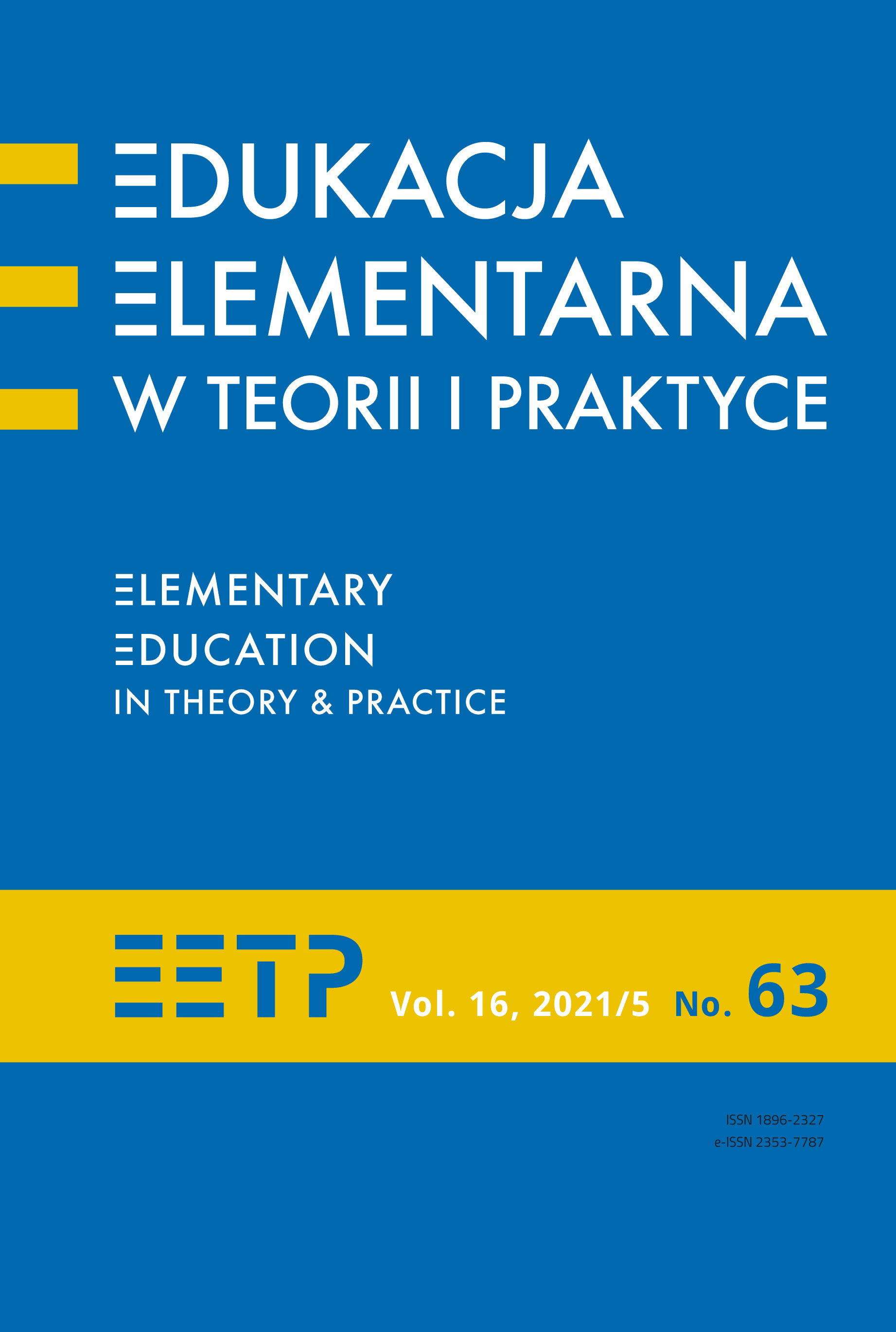Involvement of Students of Teaching Specializations in the STE(A)M Education. Examples of Good Practices.
Abstract
The basic educational assumption of the 21st century should be shaping the competences of the future in children and youth. One of the ways to support a young person in developing them is the model of education based on STEM.
The objective of the article is to present two initiatives: the Kitchen Lab for Kids project, and the online course entitled STEAM Education in Preschool, mainly addressed to the students of the Jesuit University Ignatianum in Krakow. They are presented from the point of view of a student and his/her involvement in Stem activities, showing the process of gaining not only knowledge, but, first of all, practical skills in this model of education. While participating in selected stages of the project and in the online course, the students were able to learn about the idea of STE(A)M education, test its suggestions (lesson plans/resources) and suggest modifications, as well as present their own ideas and solutions. Such way of working (focusing on practical aspects) was truly appreciated by the students who were deeply involved in the suggested activities. They appreciated both the attractiveness of the materials (resources) provided by the teachers of the Jesuit University Ignatianum and the way of transferring knowledge.
References
Dilek H., Tasdemir A., Konca A.S., Baltaci S. (2020). Preschool children’s science motivation and process skills during inquiry-based STEM activities, „Journal of Education in Science”, 6(2), 92-104. DOI:10.21891/ jeseh.673901.
Ferrari P. (2020). Trends in learning: STEM, STEAM, STREAM… A battle of acronyms?,
Furman R. (2017). STEM needs to be updated to STREAM,
http://www.iftf.org/uploads/media/SR-1382A_UPRI_future_work_skills_sm.pdf [dostęp: 24.09.2021].
Katz L.G. (2010). STEM in early years, „Early childhood research and practices, 12(2).
Margot K.C., Todd Kettler T. (2019). Teachers’ perception of STEM integration and education: a systematic literature review, "International Journal of STEM Education", Volume 6, Number 2, s. 1-16. DOI: 10.1186/s40594-018-0151-2.
McClure E.R., Guernsey L., Clements D.H., Bales S.N., Nichols J., Kendall-Taylor N., Levine M.H. (2017). STEM Starts Early. Grounding science, technology, engineering, and math education in early childhood,
Means B., Wang H., Wei X., Young V., Iwatani E. (2021). Impacts of attending an inclusive STEM high school: meta-analytic estimates from five studies, "International Journal of STEM Education" Volume 8, number 4, s. 1-19. DOI: 10.1186/s40594-020-00260-1.
Plebańska M. (2018). STEAM – edukacja przyszłości, „Meritum” 4(51), s. 2 – 7.
Schulz L.E., Bonawitz E.B. (2007). Serious fun: Preschoolers engage in more exploratory play when evidence is confounded, „Developmental Psychology”, 43(4), 1045-1050. DOI: 10.1037/0012-1649.43.4.1045.
Soylu, Ş. (2016). STEM education in early childhood in Turkey, „Journal of Educational and Instructional Studies in the World”, 6(1), 38-47.
Tippett C.D., Milford T.M. (2017). Findings from a pre-kindergarten classroom: Making the case for STEM in early childhood education, „International Journal of Science and Mathematics Education”, 15(1), 67-86. DOI: 10.1007/s10763-017-9812-8.
White D.W. (2014). What is STEM education and why is it important, “Florida Association of Teacher Educators Journal”, Volume 1, Number 14, s. 1-9.
Copyright (c) 2021 Elementary Education in Theory and Practice

This work is licensed under a Creative Commons Attribution-NoDerivatives 4.0 International License.
- When submitting a text, the author declares that he/she is the Author of the article (hereinafter referred to as the “Work”) and:
- he/she owns the exclusive and unlimited copyright to the Work,
- is entitled to dispose of the copyright to the Work.
Declares that it does not infringe any third party copyrights or legal rights.
Declares that there is no conflict of interest.
2. At the same time, the Author grants the Ignatianum University in Cracowa royalty-free, non-exclusive and territorially unlimited licence to use the Work in the following fields of exploitation:
- recording the Work in a hard copy, as well as on a digital or magnetic medium;
- reproduction of the Work using any technique, without limitation of the number of editions or copies;
- distribution of the Work and its copies on any medium, including marketing, sale, lending, and rental;
- introduction of the Work into a computer memory;
- disseminating the Work in information networks, including in the Internet;
- public performance, exhibition, display, reproduction, broadcasting and re-broadcasting, as well as making the Work available to the public in such a way that everyone can have access to it at a time and place of their own choosing;
- within the scope of dependent rights to the Work, including in particular the right to make necessary changes to the Work resulting from editorial and methodical development, as well as to translate the Work into foreign languages;
The licence is granted from the moment of the transfer of the Work to the Ignatianum University in Cracow. The Ignatianum University in Cracow is entitled to grant further sub-licences to the Work within the scope of the right granted. The licence is time-limited and it is granted for a period of 15 years, starting from the date of its granting.
Authors are permitted and encouraged to publish their text online (e.g. in their institution’s repository or on the institution’s website) before or during the submission process as this may lead to beneficial exchanges, as well as earlier and greater citation of the published text (See The Effect of Open Access). We recommend using any of the following portals of research associations:
- ResearchGate
- SSRN
- Academia.edu
- Selected Works
- Academic Search




